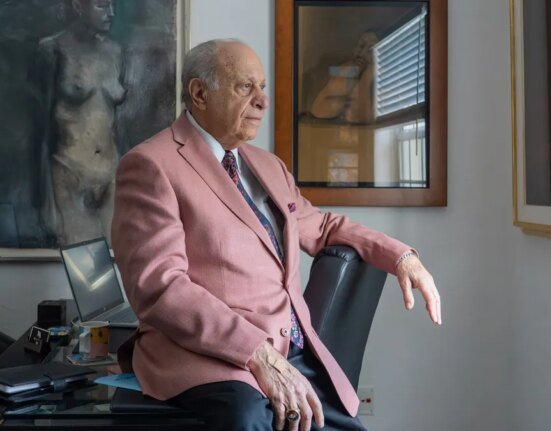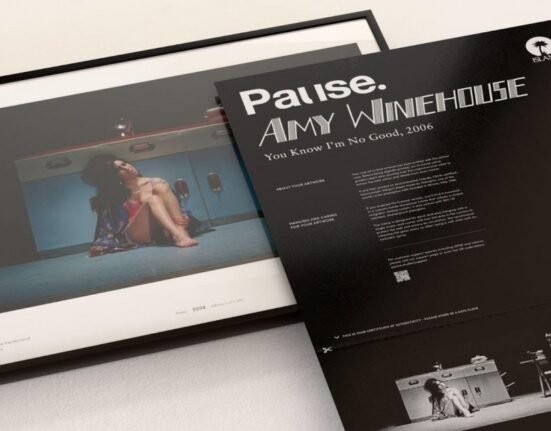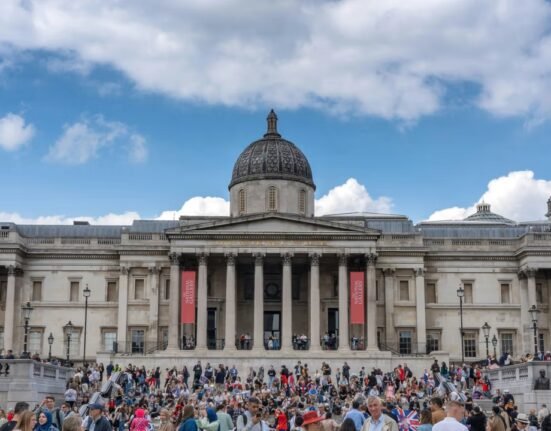Digital art-making practices produce art forms that distinguish themselves by their ability to preserve their images during dissemination. However, practices that come into being with a foundation based on a re-forming of the image provide a place to contemplate the manifestation of the digital image as a reproduction that is not free of an unmaking within its shaping through a dis-alignment of its programmic nature. Through an engagement with Glitch Art, an art making that creates images around digital deformations, the mode of digital art production is introspected. The static image, in a questioning of its potential for distortion, comes across as one iteration of its visibility, where its underlying processes assume a temporary stability, and the absence of this gives way to a formal collapse, which in turn provides a disclosure of the latent propensities of the digital image in its glitch form. Looking at the practice of the art making of glitch as not distinct from its practice of distorting media, one thereby looks at how this intertwined aspect can be a site for exploring artistic interventions in technology.
In artistic inquiry and forms of practice following New Media’s intrusion into creative forms through the frontiers of digital art, there is a question of knowing what the implications of this reach would mean for the artwork. The query is whether such art could be helpful in knowing an underlying quality of art, where the latter was imagined through a carrying over of its sublime essence to the digital medium. The virtual composition of this art turns the revelatory prospect through a separation of the digital and analogue into an anxiety of translation between these spaces. It, however, ruminates on art making itself and whether the space that contains the virtual provides an avenue for “doing” art, and whether the work of art made in the dimensionality of the newer space allows for an interrogation of this space as an extension of the art studio. In such contemplation, the dimensional space of digital crafting in the artists’ expression through it is divulged as among the conditions of New Media art and that this spatiality exerts an influence on the creative endeavour of the artist.
Spatial considerations re-align boundaries of artistic production in digital aesthetics. It also alters the manner of participation in art making when virtual paints and canvas provide an exploration of the aforementioned essential art that deliberates over comprehension of form and formal enclosures. The provisions in the digital space allow both a creation of a form and an investigation of it through various facets of a design software and an opportunity to engage with it minutely or the whole of it at once. In the tensions between an orderly and disorderly approach to interaction, a focus on specificities of the modifiable art and an intent of making with a deconstructive bent within the permits of the programme—one finds the use of graphical software. These practices that grapple with the potential of disfiguration do so in the bound space of the computer glitch. It is a demarcation that sees forms mixing into its surroundings or abandoning it to claim a distinction in the altered image. Glitching as an art-based practice can provide a way to appreciate artistic involvement with computation at the edges.
The word “glitch” as a feature of computing has come to be associated with a certain aesthetic of art and design and its origin in faults of programming is now forced through means of manual editing to create a “controlled” glitch. Glitch as such has revolved around a sense of information and its possible distortion through the functioning of program that has a potential for re-appropriation in the user’s capabilities to percept form. In this way, glitch comes across as a substitution of form that necessarily does not constitute “information” as the point of departure. Since glitch now is also “made” by users, the form of the pre-glitch is rather a form that awaits editing. Such a form could be within information as understood in computing or be otherwise, but its transformability pronounces it as the form of the glitch—the editable form that is showing of a spatial incomprehension in the process of change. This is most seen in the output of the glitch image where flickers of graphical noise try to hold onto a form that shows a distantiated foundation of “space” in digital abstraction.
Graphical modes of understanding interventions precede the turn to digital. Within televisual reception, errors that came from breaks in signals provided a form of visibility to faults in communication lines, which provided a different category of comprehending error than in audio or written forms. Here, the use of gadgets that were part of the television set could be used to adjust the glitchy aspects of the signal and attain clear visuals. Glitch art emerges in this interaction with reception of signals in user interaction with digital visibilities. The glitch, therefore, comes across as aesthetics of pre-digital forms of communication gaining semblance in New Media art through an evocation of a nostalgia and recognition for older media. Unstable graphics came to be celebrated when it separated from limitations of the television set and error invoked sensations. In order to capture the moment of the glitch, the art around it tries to store the moment of the art or at least create conditions for another iteration of the temporal glitch, and with such assertions of the glitch that come to define digital composition, one finds its origin.
Glitch art is inherently connected to the craft of digital artistry and is understood as a form that realises itself with user efforts. The spatial-temporal conditions of glitch art make participation varied. Glitch-making exists in online and offline digital editing tools where a glitch is made within experimentations of the user who may decide to change a pre-existing image prior to or once glitch is added as an alteration. The arrangement of the image and its properties at the point of glitch is not the only form of participation in creating this type of glitch. Older forms of glitch creation, in the media practices of “moshing” a data form, involved deliberate incursion into the programming behind an image through tinkering with its instructions or the reconfiguration of its hardware. This form of glitching can be seen in parallel to do-it-yourself (DIY)forms of analogue art rooted in subversive tinkering, where newer meanings through errors contest the use of a device through its margin of error, while mulling over practices of repair and restoration that look to re-create the unblemished form of an image.
Glitch’s nascent form can be traced to practices within tape-based video recording and its associated practices. The replay ability that came about with video home system (VHS) devices also became the location of video noise with the latter being the roots of “aliasing” of the visual as the cassette’s reel interacted with hardware’s play function and even more so in practices around playback such as rewind and fast-forward. The interference that kept the display from a continuous form—the intrusion of the device’s ability to track differences brought with it the notion of video synchronisation as a paradox of Zeno where the space to be found in a cohesion of user input and video changes was deterred the more interactive user sensibilities became within practice. Videotaping found its material at the point of this intersection of two efforts—the machine’s need for stabilisation and the practioner’s temporal recreation. In the sudden stops where partial visuals tried to reconnect with their larger form as “visible,” the “still” of an aesthetic break was the site of a new manner of aestheticisation.
The perception of glitch is within its participatory context. In the concerns around light as a material of image-making in modern art and the notion of play involved in “light” manipulation techniques within a larger idea of craft, perception found a creative association. Light and its opposite—the shadow re-imagined perspective and thus perception following impressionism where their variances provided breaks to imagine larger and lesser forms within the art. Such breaks were also a means of re-imagining the ideology of images in modernity and their identity as images of consumption and the “breaking” of the image became complicit with the craftwork of the “jam”[1] and defacing of the lines of the images was synonymous with an investigation of the limits of its formal imagery. In digital composition of a glitch form today, this introspection of the image in a manner of speaking, sees light as new expression. Carolyn Kane (2019, pp 71) likens this to a radical style of artistic production and the place of colour as noise within the processing of signals in digital image and its ability to produce the accidental.
In accordance with such conceptualisations of glitch, this article looks at Visakh Menon’s art that encourages an artistic emergence in the glitch and connects materialities of art. Menon’s inquiry of the glitch is within repetitive marking of a line—a creative engagement in the tradition of “replaying” and delineating as a form of de-categorisation. The process involves a sliding mechanism where Menon slowly uncovers a printed glitched image created through random-generative software that is used as a sheet for further artwork. Here, less than an inch of the sheet is revealed in what becomes the workspace as Menon vertically draws lines with a coloured pen, taking time to deepen lines or move to other segments which maintaining a sequence of interaction. Paper is slid forward in a brief break of sorts before a similar creative effort happens with the next part of the sheet with each uncovered part raising the possibility of a different pattern of linear engravings than the previous one. The resultant image carries a disorganisation from the smallest space that is definitive of its whole.
Focusing particularly on his aptly named series “Interference,” the work conveys the glitch as something found both inside of the software art and in humanly efforts from the user’s perspective, in an analogue participation. Menon’s segmentation of the image aligns sections and shades into interiors and exteriors; not hugely different from the glitch image’s overriding of its once visuals. The process of art making here is the bifurcation of terrain that reflects efforts uniting the digital beginning and the physical ends of an overall form. The finished images in the series visually come close to imageries of waves, bursts, and flows with the piece 20-D interference almost etching a picturesque in the space of the glitch. It, however, remains that bits of the composition would have made for a completely different look of the art in other circumstances and that a finality of composition is a wandering between forms. In what Alexander Wilson calls a regime of “raw” art (Wilson 2014, pp 58), the creation of a work of art here is a non-distinctive measure of art that maintains its own distinction.
In dealing with the spatial in this dimension, the art of glitch-making offers a way to consider digital circulation and the “obsolete” form. Digital media, recreated in the imagery of glitch find themselves in new modes of circulation and usability. Digital dissemination’s requirement on a flow of the constantly “new” is confronted by the presence of an older form in its midst albeit a defaced one. The glitch then excavates showing in its graphical presentation a breach in the “life” of digital ageing and its processes. On the contrary, its propagation through user practices commits it to the in-between of this art’s dimensionality where they shape or deform an image echoing practices that tie to instances of the not yet virtual and thus new. The analogue’s intrusion into the space of the digital through the glitch allows a prospect of collaboration between the domains. As software enabling art-editing accommodates glitch into its features and templates of distortion become applicable to the digital image, the non-digital as a position to “think” glitch-making gains relevance.
Programmatic creations can harbour a set of distinctions inherent to its function with variations eventually seeping into formulations, but the analogue moment offers a pause to evaluate and reconsider creative efforts at location of the artist. The non-programmed glitch of material interventions is the material of a breakdown of the realm of the digital-born image and the forcing of such imagery to meet the glitch makers of analogue art, that is, physical materialities. Glitches and their art, specifically ones that have to do with forms of error that users encounter in the surroundings of the physical offer creative ways of imagining mitigation on one hand whilst on the other familiarise themselves with the mis-happenings of software through this creative dimension. Here, the stamp of a transient glitch can provide a commentary on the asymmetries of digital communication. In the form of an “inscription” that relays a moment of lapse, the “glitch” of the system can aid a practioner in pondering the frictions and assimilations between creative efforts in the online and offline worlds.







